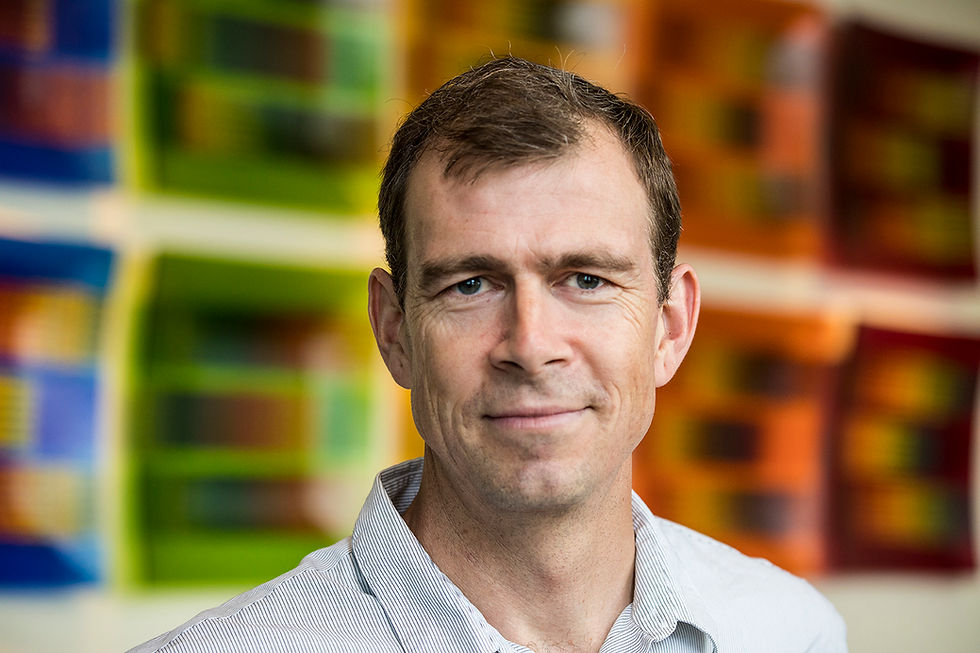The Common Sense Colloquy: Q&A with Nathaniel Keohane of The Center for Climate and Energy Solutions
- Ben Finzel

- May 31, 2023
- 7 min read
Our work on energy, environment and equity public affairs provides opportunities to work and collaborate with a number of organizations and advocates leading the way on these issues. One of those organizations is The Center for Climate and Energy Solutions (C2ES). In fact, this is the second time we’ve featured C2ES in this series: we interviewed former C2ES President Bob Perciasepe in July of 2018.
This month, I’m happy to feature C2ES’s current leader, Dr. Nathaniel Keohane. Nat is an economist with more than 20 years of energy and environmental policy experience in academia, government and the non-profit sector. He joined C2ES in July of 2021 after serving as Senior Vice President for Climate at Environmental Defense Fund where he led all of EDF’s climate work in the U.S. and across the globe.
Previously, Nat served the Obama Administration as Special Assistant to the President for Energy and Environment in the National Economic Council and Domestic Policy Council. He was also an Assistant and then Associate Professor of Economics at the Yale School of Management. He has a B.A. from Yale College and a Ph.D. from Harvard University.
C2ES is a climate-focused NGO that works with policy makers and businesses to address challenges and find solutions focused on “accelerating the global transition to net-zero greenhouse gas emissions and a thriving, just, and resilient economy.” With that kind of mission, it only makes sense that we’d feature them in this series again. It’s a pleasure and a privilege to have Nat join us for the Common Sense Colloquy.
Our thanks to Nat for sharing his time and insight with us – and you.
Q: There’s so much happening on climate and energy policy, and it feels like we’ve made a lot of progress with passage of the bipartisan infrastructure law and Inflation Reduction Act. But there’s still so much work to be done. How do you view the landscape now? Where are we and where do we need to go?
A: We have indeed made great progress in the last few years. That started on January 20, 2021, when President Biden announced that the United States would re-enter the Paris Agreement. It continued through the administration’s commitment to an ambitious target of cutting U.S. emissions economy-wide by 50 to 52 percent below 2005 levels by 2030 – an announcement that helped galvanize more ambitious action from other countries. The bipartisan infrastructure law (formerly known as the Infrastructure Investment and Jobs Act, or IIJA) and Inflation Reduction Act (IRA) together represent an investment by the federal government of more than half a trillion dollars into clean energy technologies to cut climate pollution. And on top of the legislation, we’ve seen the Environmental Protection Agency use its Clean Air Act authority to propose emissions standards for cars and trucks and, most recently, power plants. Taken collectively, these steps are a tremendous down payment on that 2030 goal of a 50 to 52 percent cut in emissions by the end of this decade.
That said, we have more to do to reach that 2030 goal, as well as the goal of net-zero by 2050. We need to scale technologies like carbon capture, hydrogen, and advanced nuclear. We need to get zero-emission vehicles on the road and the infrastructure supporting them. And we need to address hard-to-abate industrial sectors, changing how we produce steel and cement, deploying new low-carbon options for industrial heat, and producing low-carbon aviation fuel. The IIJA in particular provided important funding for many of those critical-path technologies, but much more will be needed to speed deployment and catalyze demand.
At C2ES, we also see an economy-wide carbon price as a powerful approach that would create powerful incentives to cut emissions and catalyze innovation and deployment of new technologies. A carbon price would make every other policy work better, by aligning the entire economy with a low-carbon future rather than against it. The conventional wisdom is that a carbon price is politically impossible, but that’s belied by the fact that a dozen U.S. states already have a carbon price in place, as well as countries around the world including Canada, the UK, and the European Union. It will not happen this Congress, but there’s no reason it shouldn’t be part of the discussion in the future.
Q: The C2ES model seems made for this moment given your work to bring different organizations together to address and find solutions for challenging issues. How do you communicate that approach? How important is communications to your success?
A: Communications is central to our work. Bringing together serious-minded businesses with climate policy advocates requires a great deal of trust. That trust doesn’t come from thin air, but we find it does grow over time. We see among our greatest assets the ability to convene stakeholders who might not otherwise find each other or who might just need us as a mediator to host productive conversations.
Of course, this is where communications can be critical. C2ES advocates for ambitious climate policy aligned with the U.S. 2030 goal and getting to net zero by 2050. We also acknowledge that the transition will take massive investment, as well as collaboration among business leaders, policy makers, and communities. While we share our own views with policy makers and in public statements, we also recognize that there are valid differences among stakeholders that can all be simultaneously expressed in the context of genuine concern for climate progress.
Q: Communicating the urgency of climate change should be simple, but the past few decades have shown us that it isn’t. What should we do next to ensure that we successfully convey both the urgency of the problem and the need to support a broad range of solutions to address it?
A: On communicating the urgency: I think there’s been a sea change just in the last few years in terms of public awareness of climate change. A main driver of that, frankly, is that we’ve already heated up the atmosphere enough – 1.1 degrees Celsius and climbing – that we are seeing the impacts all over the globe and all over this country, in the form of more intense heat waves, wildfires, droughts, hurricanes, flooding, and so on. At the same time, a very concerted effort by the scientific community means that we have the tools to attribute those events to climate change. Ten years ago, we would always have to caveat every statement about extreme weather by saying “of course, no one event can be attributed to climate change.” That’s not true anymore – we can make those attributions. And, finally, there have been two major shifts in media coverage of climate change over the past decade. First, the major media stopped treating climate skeptics on equal footing with the overwhelming scientific consensus and started reporting the science accurately and factually. Second, the New York Times and Washington Post and other major media outlets invested in large climate reporting desks.
So for all those reasons, climate change in my view has gone from being something that people think is going to happen to someone on the other side of the world in 50 years, to something that is happening now where they live. And that is the most important shift in creating a sense of urgency.
If anything, I think the communications challenge lies in balancing that sense of urgency with a sense of hope and possibility. One of the trends that worries me most is the growing sense of climate despair or climate fatalism among some people, particularly younger millennials and Gen Z. Even as we emphasize the urgency, we need to convey that there are solutions available, that we are making real progress, and that there are steps we can take now to ensure a safer and more prosperous future.
This is a key point for C2ES. As our name suggests, we are a solutions-oriented organization. That means that we direct our attention not on litigation or direct action campaigns—which have their appropriate place—but instead on solutions for business leaders, policy makers, and communities to help them reduce emissions, invest in resilience, and build a more prosperous net-zero economy.
Q: What’s the best “common sense” advice about communications you’ve received?
A: “Don’t drool.”
The first time I had an on-air TV interview, perhaps 15 years ago, a colleague surprised me with that advice as I was about to go live. On its face, of course, it’s impossible to argue with. But I like it because it also speaks, in the pithiest possible way, to the importance of simple, direct communication. It’s a great way of saying: Don’t overthink this. We can get so tied up in preparing for a good point-by-point response to every possible question that we forget that we need to convey our key points in a way that a broad audience will understand and that will resonate with them.
As an example, when we talk about the transition to a low-carbon economy it’s easy to get caught up in the policy details or all the transformations that need to take place. But at the same time, we have to be careful also to offer a vision of that net-zero economy that people can plausibly see themselves and their families fitting into. As you said, communicating urgency is important, but businesses still need to make money and build things, and parents still need to drop kids off at soccer practice. So the goal is to paint that picture that it’s not just about a stable climate, but also about progress and modernizing an economy.
Also, it just means don’t drool because that’s the only thing anyone will remember.
Q: What’s the best “common sense” advice about communications you've given to others?
A: Well, I often do start with “don’t drool.”
But beyond that: Meet people where they are. Don’t speak to an audience at the annual UN climate talks the same way you speak to a conference of industrial and manufacturing representatives. It’s on you to do the homework on how to draw the connection between your goals and their work.

































Comments